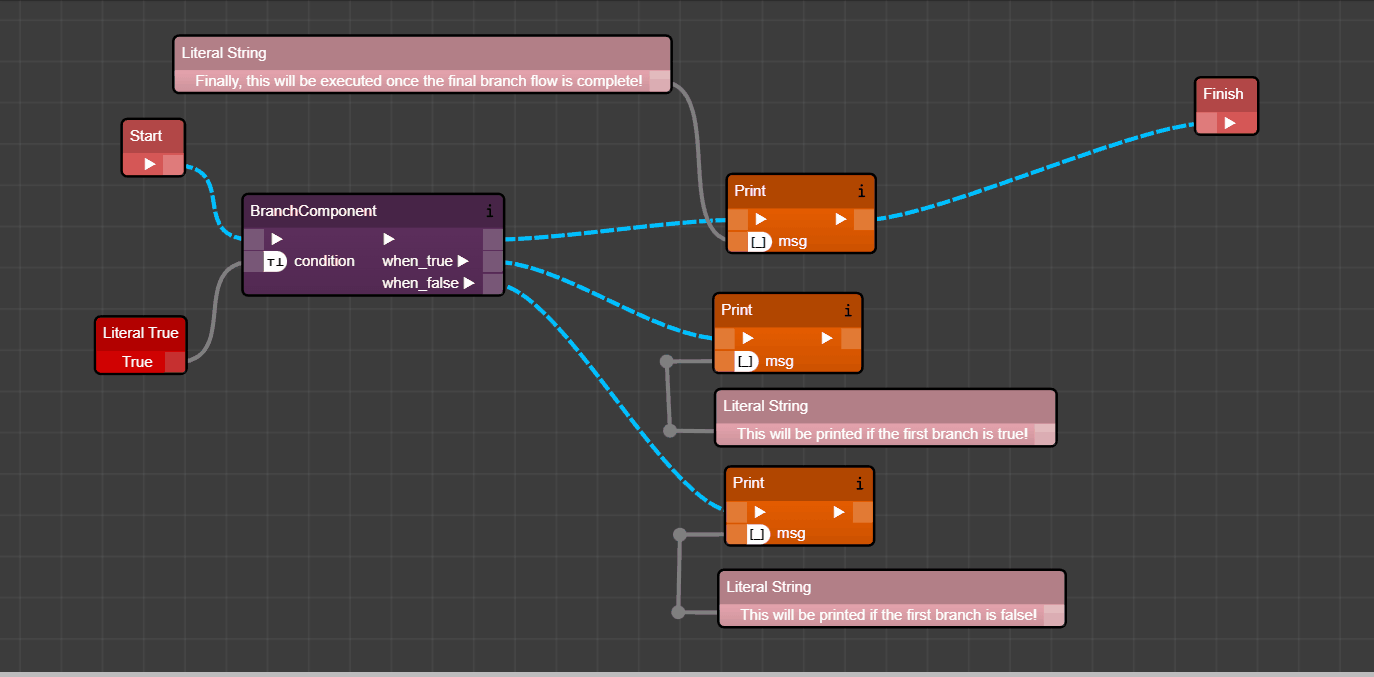Branch and Loop Components
Xircuits allows you to implement branch conditionals and loops in your workflow by allowing users to specify BaseComponent as a class attribute.
In the frontend canvas, it will be rendered as a flow ▶ port, which users are able to flow link to other library components as opposed to just passing values to a parameter port. In this document, we will refer to these extra flow ports as controlflow ports.
Under the hood, the compiler will utilize the SubGraphExecutor to execute branch logic.
The general rule of the thumb of controlflow components are:
- A controlflow component will have more than one out-flow
▶ports - the main flow which is always at the top and additional controlflow▶ports. - The execution flow will always go to the controlflow ports first, given that the condition is fulfilled.
- If there is no next Component after the a controlflow branch, it will return to the previous main flow.
Consider the following branch example:
from xai_components.base import Component, xai_component
@xai_component
class BranchComponent(Component):
when_true: BaseComponent
when_false: BaseComponent
done: bool
condition: InArg[bool]
def do(self, ctx) -> BaseComponent:
if self.condition.value:
next = self.when_true
else:
next = self.when_false
while next:
is_done, next = next.do(ctx)
try:
return self.done, self.next
except:
return self.done, None

The output is show below:
Details
Xircuits is running...
Executing: Print
This will be printed if the first branch is true!
Executing: Print
Finally, this will be executed once the final branch flow is complete!
Finished Executing
We have several implementations of controlflow components in the controlflow component library.